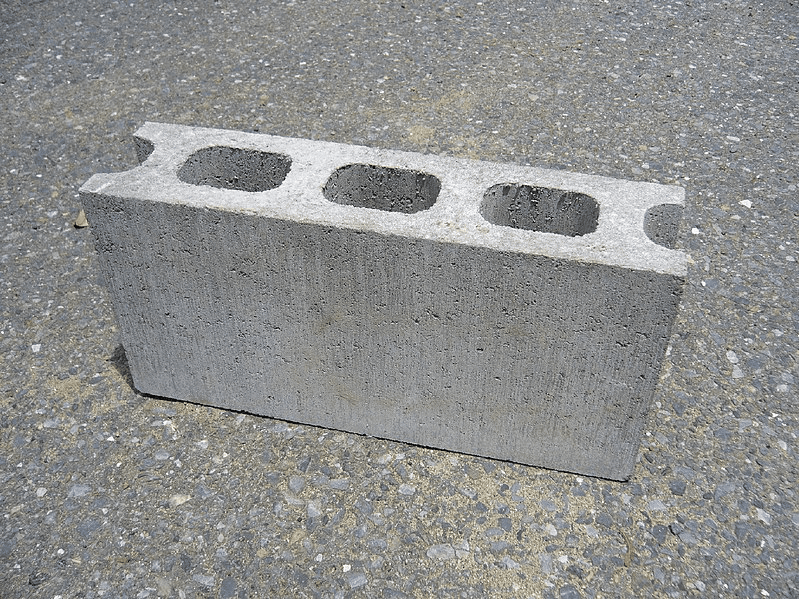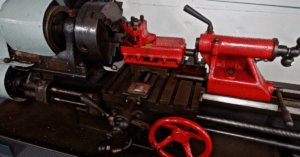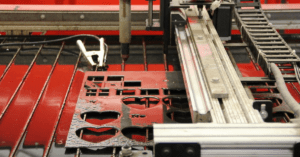
If you have a construction project, you likely need to cut concrete blocks for the building structure. There are several methods to get the job done. One of the easiest ways is to use a circular saw.
To cut concrete blocks with circular saw tools, you first need to wear safety gear and set up the blade. Mark the cutting path before you cut the concrete.
However, there are several types of blades you could set up with your circular saw, which we will cover below. This article will also guide you through the steps of cutting concrete blocks.
How To Cut Concrete Blocks With Circular Saw? A Step-by-Step Guide
Concrete blocks are among the most popular materials used for construction. They can be cut using different tools, including a circular saw.
A circular saw is a versatile machine that can make clean and precise cuts on concrete blocks. However, it can be challenging to use, especially if you are a beginner. To help you, we made this step-by-step guide for cutting concrete blocks with a circular saw.
Prepare the Things You Will Need
The first thing to do is prepare the tools you will need. Below is a list of the equipment necessary for cutting concrete blocks.
- Circular saw
- Cutting blade
- Safety equipment
- Speed square
- Pencil or chalk
- Hammer
- Chisel
Keep these items on a table or bag near you before cutting concrete blocks. This way, you do not have to locate them while in the middle of the cutting process.
Wear Safety Gear

Concrete blocks are heavy with sharp edges. They also create a lot of dust when cut into two. Plus, the circular saw blade rotates at high speeds, which can slice anything on its way. They can ultimately pose a danger to anyone if you are not careful.
It is best to use safety equipment when working with concrete blocks.
Slip on work boots to protect your toes from falling concrete.
Wear a pair of safety glasses to shield your eyes against concrete dust. Match it with a face shield for extra protection.
You must also put on a mask to avoid inhaling debris created during cutting. Consider using a respirator to help you breathe properly.
You may also want to wear ear protection because the noise can damage your hearing. Get either ear muffs or earplugs.
Finally, cover any exposed parts of your body for added safety. Consider long-sleeved shirts and long pants. Remember to avoid loose-fitting clothes because they can get caught on the sharp blade.
Mark the Cutting Area
After wearing the recommended safety equipment, you can start handling the concrete block.
Place the block on the work surface. Next, mark the top of the concrete with a pencil or chalk. Use a speed square or straight edge to create straight lines on the material. These will act as the cutting path you must follow when working on the concrete block.
Marking can also help you make accurate cuts on the concrete block. If you do not label the cutting area, you may remove too much material and ruin the project.
Set Up Your Circular Saw

Once you have marked the concrete block, you can prepare the circular saw for cutting.
You can set up three types of blades with your saw. Below are the options you can choose from.
- Masonry blade – It is an inexpensive blade that can cut a few concrete blocks. It is not the fastest and the most durable saw blade out there. Hence, it might be unsuitable when working with dozens of concrete blocks.
- Dry diamond blade – This high-performance blade can cut through concrete blocks quicker than a masonry blade. It also has a durable build that lasts you longer. However, it tends to be expensive.
- Wet diamond blade – Like the dry diamond blades, wet cutting blades have a sturdy construction and efficient cutting performance. The only difference is that they require a steady stream of water when cutting. The water reduces the heat and fine dust created by the blade to prevent overheating.
After selecting your preferred circular saw blade, you can secure it into place. Note that the installation process varies depending on the saw model. Consult the product manual to learn how to install the blade properly.
But to give you a general idea, you likely need to remove the bolts and washer from the circular saw. Slide the blade into the saw. Then, use a screwdriver to put the bolts and washer back. Ensure everything is tightly secured before moving to the next step.
Adjust the Circular Saw Blades
Now that you assembled the circular saw blade, you can adjust its cutting depth. Doing so can ensure your safety and the tool’s efficiency.
We recommend setting the saw depth at ¼ inch when cutting concrete blocks. It prevents kickback and binding material. However, feel free to adjust the depth if you will cut thick concrete blocks.
To change the saw depth, unlock the depth tilting base by pulling the knob. Slowly slide the blade against the workpiece edge to adjust its cutting depth. Pull the knob again to lock this setting in place.
Make the First Cut
It is time to make the first cut. Grip the circular saw with both hands. Place it on the concrete block near the marked line you put earlier.
Next, turn on the circular saw. Let it reach the maximum rotations per minute (RPM) to ensure efficiency.
Then, begin cutting the concrete block. Follow the drawn line to achieve a clean and precise cut.
Avoid putting pressure on the circular saw. Instead, let the power tool do its work. Simply guide it along the cutting area.
You may want to ask help from another person if you are using wet diamond blades. Let them provide a steady stream of water while you cut through the concrete block. The water will help cool down the circular saw. At the same time, it can minimize the dust created during the cutting process.
After cutting one side of the concrete block, flip it to its opposite side. Follow the steps above and start to cut again.
Finish Cutting
Cutting with the circular saw is enough if you are handling a thin concrete block. This tool can quickly divide the block into two.
However, when working on a thick concrete block, you likely need a hammer and chisel to finish the job. After following the marked line with the saw, turn off the power tool.
Then, strike the concrete with a hammer. Avoid using too much force because the concrete may break into small pieces. Use the right amount of pressure to tear the block even.
Remember to follow the necessary precautions because striking concrete can lead to pieces falling off.
Frequently Asked Questions
What kind of blade do you use to cut concrete blocks?
You can use masonry or diamond blades to cut concrete blocks. Choosing between the two blade types depends on your preference and budget.
Abrasive corundum masonry blades are inexpensive and readily available. They are ideal for cutting concrete. However, they tend to make shallow cuts ranging from ¼ and ½ inches. They also wear out quickly. So if you want to divide several concrete blocks, a masonry blade is not the best choice.
In contrast, a diamond blade can produce deep cuts with ease. It is also more durable, owing to its composite construction. Plus, wet cutting diamond blades can reach the required cutting depth without overheating. The only downside is its high price tag.
Will a carbide blade cut concrete?
Carbide blades are commonly used to cut metal and wood. However, they are also suitable for concrete cutting jobs.
That said, do not expect a carbide blade to cut as accurately and smoothly as diamond blades. This abrasive material makes rough cuts on the surface.
Conclusion
There are several tools that can help you cut concrete blocks. One of them is the circular saw.
To use a circular saw, you first need to prepare what you will need. These include the cutting blade, drawing materials, and safety gear. After marking the concrete and assembling the saw, you can begin cutting the block.
Do you have other questions about using a circular saw for concrete cutting? Let us know by sending a message via our contact page!






